Topaz
Topaz is a silicate mineral and a member of the aluminum silicate family. It is renowned for its dazzling array of colors, including shades of blue, yellow, pink, brown, and more. Among these, blue topaz is particularly popular in jewelry. Here’s an overview of the key characteristics, chemical composition, and crystal structure of topaz:
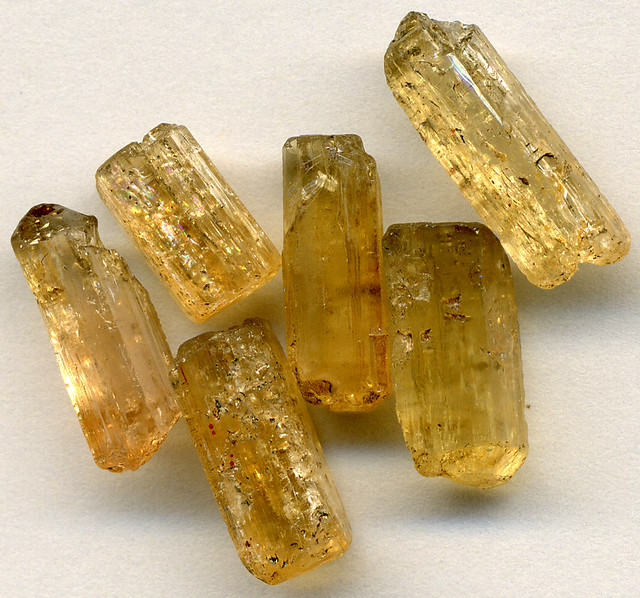
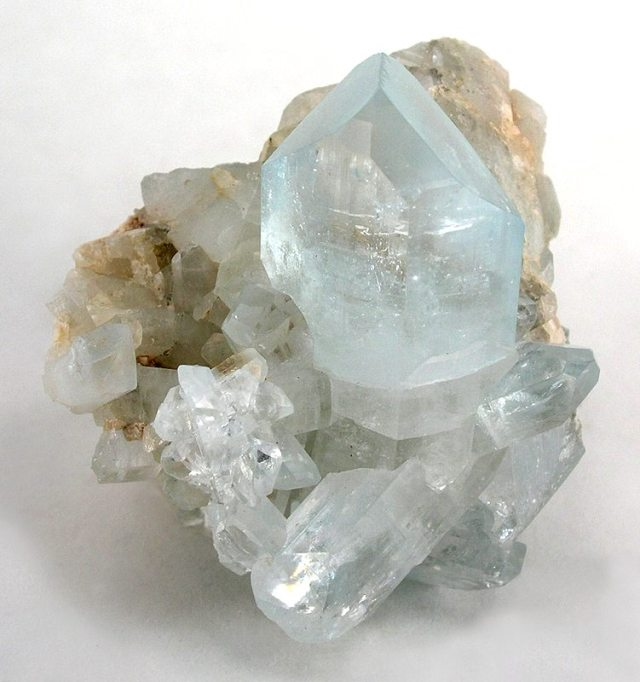
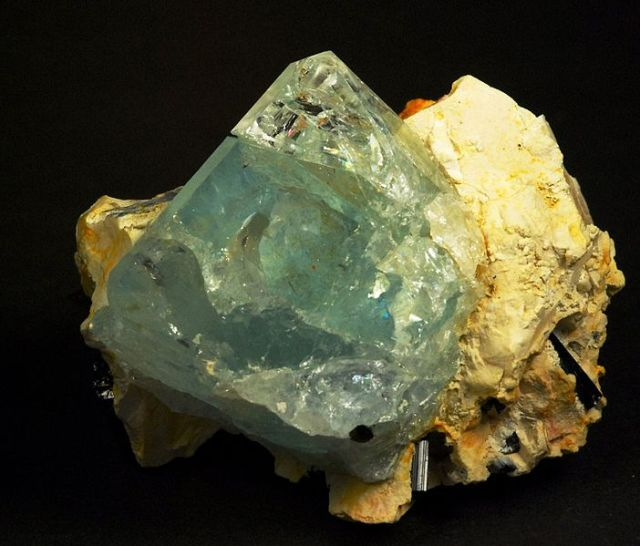
Topaz (these crystals range in length from 9 to 16 millimeters)
Blue-Topaz-from-Erongo-Mountain
Blue Topaz. St Anns Mine, Zimbabwe.
Name: From the Greek topazion, meaning to seek, apparently in allusion to the Island of Zabargad (Zabirget or St. Johns), in the Red Sea, Egypt; the location of which was long hidden, known for olivine (\peridot” and \chrysolite”), referred to since antiquity as topaz.
Association: Tourmaline, beryl, microcline, albite, °uorite, cassiterite, zinnwaldite, quartz
Crystallography: Orthorhombic; dipyramidal. In prismatic crystals terminated by pyramids, domes, and basal plane. Often highly modified. Prism faces frequently vertically striated. Usually in crystals but also in crystalline masses; granular, coarse or fine.
Composition: An aluminum fluosilicate, Al2Si0 4 (F,0 H )2
Diagnostic Features: Recognized chiefly by its crystals, its basal cleavage, its hardness (8), and its high specific gravity.
Definition and Characteristics:
- Topaz is a mineral that belongs to the orthosilicate group.
- It has a hardness of 8 on the Mohs scale, making it quite durable and suitable for various jewelry applications.
- Its distinctive vitreous (glass-like) luster contributes to its appeal as a gemstone.
- Topaz can form in a variety of crystal habits, including prismatic crystals and terminated points.
- It often exhibits pleochroism, meaning it can display different colors when viewed from different angles.
Chemical Composition:
- The chemical formula of topaz is Al2SiO4(F,OH)2. This formula reflects its composition, consisting of aluminum (Al), silicon (Si), oxygen (O), fluorine (F), and hydroxide (OH) ions.
- The aluminum and silicon atoms form a tetrahedral framework, with oxygen atoms binding them together.
- Fluorine and hydroxide ions are incorporated into the crystal lattice in varying amounts, influencing the color and other properties of the mineral.
Crystal Structure:
- Topaz has an orthorhombic crystal structure. In this structure, the crystallographic axes are not equal in length and are at right angles to each other.
- The crystal lattice is composed of interconnected tetrahedra formed by silicon and oxygen atoms, with aluminum atoms occupying some of the tetrahedral positions.
- The arrangement of aluminum and silicon atoms in the crystal structure determines the mineral’s properties and colors.
- The presence of fluorine and hydroxide ions in the crystal lattice affects the overall symmetry and properties of the mineral as well.
In summary, topaz is a captivating gemstone with a diverse range of colors and remarkable optical properties. Its chemical composition, crystal structure, and inherent characteristics contribute to its appeal in the world of gemology and jewelry design.
Contents
- Types and Colors of Topaz
- Formation and Occurrence
- Gemological Properties
- Mining and Sources
- Uses of Topaz
- Famous Topaz Gemstones
- Topaz in Modern Jewelry
Types and Colors of Topaz

Topaz is a gemstone that comes in a variety of colors, each with its own unique appeal. The color of topaz can vary due to impurities and trace elements present during its formation. Here are some of the types and colors of topaz:
1. White Topaz:
- White topaz is colorless and transparent, resembling a diamond.
- It is often used as a less expensive alternative to diamonds in jewelry.
2. Blue Topaz:
- Blue topaz is one of the most popular and widely recognized types of topaz.
- Natural blue topaz is quite rare, and most blue topaz on the market is produced by treating colorless or pale yellow topaz with irradiation and heat.
- The color ranges from pale sky blue to a deeper Swiss blue or London blue.
- Blue topaz is associated with calmness, communication, and self-expression.
3. Yellow Topaz:
- Yellow topaz ranges in color from pale yellow to vibrant golden hues.
- It can often be confused with citrine due to its similar color range, but citrine is a separate gemstone.
- Yellow topaz symbolizes abundance, strength, and optimism.
4. Pink Topaz:
- Pink topaz can vary from delicate pastel shades to vibrant hot pink.
- This color is often achieved through heat treatment of brownish or pale yellow crystals.
- Pink topaz is associated with love, romance, and emotional healing.
5. Brown and Champagne Topaz:
- Brown topaz, often referred to as “sherry” topaz, has warm, earthy tones.
- Champagne topaz combines brownish hues with a touch of yellow, resembling the color of champagne.
- These colors are relatively less common but still have their own unique charm.
6. Imperial Topaz:
- Imperial topaz is a rare and highly prized variety that displays a rich golden to orangish-red color.
- It is often found in certain mines in Brazil and is considered one of the most valuable topaz colors.
- Imperial topaz symbolizes strength, passion, and confidence.
7. Mystic Topaz:
- Mystic topaz is a treated variety that displays a rainbow-like play of colors across its surface.
- This effect is achieved through a special coating that creates a multicolored iridescence.
- Mystic topaz is known for its vibrant and captivating appearance.
8. Color-Change Topaz:
- Color-change topaz exhibits different colors under varying lighting conditions.
- It can appear blue under daylight and purple or reddish under incandescent light.
- The color change is due to the interaction between the gem’s trace elements and light sources.
These are just some of the many colors and variations of topaz. The beauty and diversity of topaz make it a popular choice for jewelry enthusiasts and collectors alike.
Formation and Occurrence

Topaz is a mineral that forms under specific geological conditions and is found in various types of rock formations around the world. Its formation involves a combination of geological processes and the presence of certain elements. Here’s an overview of how topaz is formed and where it is commonly found:
Formation Process:
- Magmatic Formation: Topaz can form in igneous rocks, especially in granitic pegmatites and certain types of volcanic rocks. During the cooling of molten rock (magma), elements and compounds can crystallize to form minerals like topaz.
- Hydrothermal Formation: Topaz can also form through hydrothermal processes. Hydrothermal fluids rich in elements like aluminum, silicon, and fluorine interact with existing minerals in the Earth’s crust, leading to the growth of topaz crystals.
- Metamorphic Formation: In some cases, topaz can form as a result of high-pressure metamorphism, where existing minerals recrystallize under extreme heat and pressure. This process can occur in regions where tectonic forces are intense.
Occurrences
- Topaz is found in a variety of geological settings around the world, often associated with certain types of rocks and minerals.
- Some of the largest and most significant deposits are located in countries like Brazil, Russia, Sri Lanka, Nigeria, and the United States.
Gemstone Mining: Topaz mining involves extracting the gemstone from its host rock. This can be done through various methods, including open-pit mining, underground mining, and alluvial mining in riverbeds.
Enhancements: Natural topaz is often treated to enhance its color. For instance, colorless or pale topaz might be irradiated and then heated to achieve the desired blue color. It’s important to note that disclosure of treatments is crucial in the gemstone industry.
Topaz forms through a combination of geological processes and is found in a range of environments worldwide. The specific conditions under which it forms contribute to its varied colors and characteristics.
Gemological Properties

Topaz is a fascinating gemstone that possesses a range of gemological properties that contribute to its beauty, durability, and overall value. Here are some key gemological properties of topaz:
1. Hardness: Topaz has a hardness of 8 on the Mohs scale, making it relatively durable and suitable for jewelry use. However, while topaz is quite hard, it can still be scratched by harder materials like corundum (ruby and sapphire) and diamond.
2. Cleavage: Topaz has perfect basal cleavage, meaning it can split along certain planes with relative ease. This cleavage can make cutting and handling the gemstone more challenging.
3. Specific Gravity: The specific gravity of topaz ranges from about 3.49 to 3.57, which helps gemologists distinguish it from other gemstones based on density.
4. Refractive Index: Topaz has a refractive index (RI) ranging from approximately 1.609 to 1.643. This property affects the gem’s brilliance and sparkle.
5. Dispersion and Fire: Topaz has a high dispersion, which refers to its ability to split white light into its spectral colors. This property is responsible for the “fire” or flashes of color seen in well-cut topaz gemstones.
6. Luster: Topaz exhibits a vitreous luster, similar to that of glass. This luster adds to the gem’s overall brilliance.
7. Pleochroism: Many topaz crystals exhibit pleochroism, meaning they can display different colors when viewed from different angles. This characteristic can influence the cutting process to bring out the most desirable color.
8. Toughness: Topaz is relatively tough and less brittle than some other gemstones. This toughness is due in part to its excellent hardness and its lack of perfect cleavage in directions that might cause vulnerability.
9. Heat Sensitivity: While topaz is generally stable under normal wear, some treatments, such as high-temperature heat treatment used to create certain colors, can be sensitive to extreme heat or sudden temperature changes.
10. Color Stability: While many natural topaz colors are stable, some varieties may fade over time due to prolonged exposure to sunlight or heat. Treated blue topaz, for instance, might lose its color when exposed to prolonged sunlight.
11. Identifying Features: Gemologists use a combination of gemological equipment and expertise to identify topaz, including its refractive index, specific gravity, pleochroism, and spectroscopic analysis to detect any treatment.
12. Enhancements: As mentioned earlier, many blue topaz gemstones on the market are treated with irradiation and heat to achieve their color. It’s important for sellers to disclose any enhancements to buyers.
Understanding these gemological properties is crucial for gemologists, jewelry designers, and consumers to appreciate and evaluate the quality of topaz gemstones accurately.
Mining and Sources

Topaz is found in various regions around the world, with several countries hosting major deposits of this beautiful gemstone. Here are some of the major topaz deposits and mining sources from different parts of the globe:
- Brazil: Brazil is one of the most significant sources of topaz, producing various colors including the highly valued imperial topaz. The Ouro Preto region in Minas Gerais is particularly known for its imperial topaz deposits. Other states such as Bahia and Rio Grande do Norte also contribute to Brazil’s topaz production.
- Russia: The Ural Mountains in Russia have historically been a notable source of topaz. The Mursinka and Miass regions are known for producing topaz of various colors, including colorless and pale blue.
- Sri Lanka: Sri Lanka, known for its rich gemstone deposits, produces a variety of topaz colors, including blue and pink. The Ratnapura region is famous for its gem mines.
- Nigeria: Nigeria has significant deposits of blue topaz. The Jos Plateau region is a major source of blue topaz, often found in pegmatite rocks.
- United States: Topaz can be found in various states in the U.S. Some notable sources include:
- Utah: The Topaz Mountain region in Utah is famous for producing the “American Golden Topaz,” one of the largest faceted topaz gemstones.
- Colorado: The Pike’s Peak area in Colorado is known for colorless and pale blue topaz.
- Texas: The Llano Uplift region in Texas produces blue topaz.
- Pakistan: Pakistan is known for producing various gemstones, including topaz. Some regions, like Gilgit-Baltistan, yield topaz of different colors.
- Madagascar: Madagascar is also a source of topaz, with deposits found in different parts of the country.
- Mexico: Certain areas in Mexico, such as the Ojuela Mine in Durango, have also produced topaz.
- Namibia: Limited quantities of topaz are found in Namibia, often associated with granite and pegmatite deposits.
- Australia: Australia, particularly the Cairns region in Queensland, produces colorless and pale blue topaz.
- Myanmar (Burma): While not a major source, Myanmar has produced some topaz, often found alongside other gemstones.
- Nepal: Nepal is known for its gemstone deposits, and topaz is among the gems found in the region.
These are just a few examples of the countries and regions where topaz is mined. The availability of different colors and qualities varies across these sources, contributing to the diversity of topaz gemstones in the market.
Uses of Topaz
Topaz is a versatile gemstone that serves various purposes, ranging from its use in jewelry and ornamental items to industrial applications due to its hardness and optical properties. Here are some common uses of topaz:
1. Jewelry and Ornamental Use:
- Gemstone Jewelry: Topaz is often faceted and used in various types of jewelry, including rings, necklaces, earrings, and bracelets. Its wide range of colors allows for a variety of design options to suit different tastes and styles.
- Birthstone: Topaz is the birthstone for the month of November. It is associated with qualities like strength, wisdom, and courage, making it a meaningful choice for personal jewelry and gifts.
- Engagement Rings: While not as common as diamonds, blue topaz and other colored topaz varieties can be used in engagement rings, offering a unique and colorful alternative.
- Fashion Accessories: Topaz can be incorporated into brooches, hairpins, tiaras, and other decorative accessories, adding a touch of elegance and glamour to outfits.
2. Industrial Applications:
- Abrasives: Due to its hardness, topaz is used as an abrasive material in various industrial applications. It is employed for cutting, grinding, and polishing hard materials.
- Optics and Electronics: Colorless and transparent topaz can be used as a material for certain optical components, such as lenses and prisms, due to its high refractive index and transparency to certain wavelengths of light.
- Heat-Resistant Windows: Topaz’s resistance to heat and temperature changes makes it suitable for certain applications in which heat-resistant windows or protective covers are needed.
- Scientific Instruments: Topaz can be used in scientific instruments, such as X-ray spectroscopy systems, where its properties are advantageous for precise measurements.
3. Spiritual and Metaphysical Purposes:
- Crystal Healing: In various spiritual and metaphysical practices, topaz is believed to have healing properties. Different colors of topaz are associated with specific qualities, such as promoting communication, enhancing creativity, and fostering emotional healing.
- Energy and Chakra Healing: Different colors of topaz are often linked to specific chakras and energy centers within the body, with each color having its own unique energetic effects.
4. Collecting and Investment:
- Gemstone Collecting: Collectors often seek out topaz specimens due to their diverse range of colors and unique characteristics. Rare colors, large sizes, and exceptional qualities can make topaz specimens valuable collectibles.
- Investment: While certain rare and high-quality topaz varieties can appreciate in value over time, investing in gemstones requires careful consideration and expert guidance.
Famous Topaz Gemstones
Several famous and historically significant topaz gemstones have captured the attention of gem enthusiasts and the public alike. Here are a few notable examples of famous topaz gemstones:
The American Golden Topaz
1. The American Golden Topaz:
- This massive golden topaz, weighing an astounding 22,892.50 carats (around 10.12 pounds or 4.6 kg), is one of the largest faceted gemstones in the world.
- It was discovered in Minas Gerais, Brazil, in the mid-19th century and later acquired by a group of American gem enthusiasts.
- The American Golden Topaz is now part of the collection at the Smithsonian National Museum of Natural History in Washington, D.C.
The El-Dorado Topaz
2. The El-Dorado Topaz:
- Weighing 31,000 carats (around 13.67 pounds or 6.2 kg), the El-Dorado Topaz is one of the largest cut topaz gemstones in existence.
- This colorless and nearly flawless gemstone was discovered in Minas Gerais, Brazil, in the mid-1980s.
- It is part of a private collection and has been displayed at various gem and mineral exhibitions.
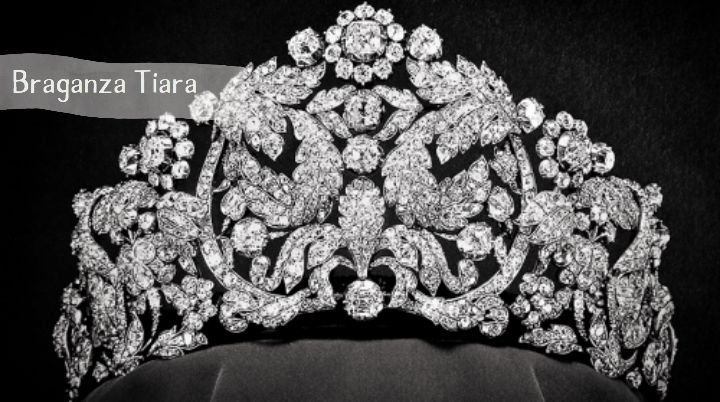
The Braganza Diamond
3. The Braganza Diamond (Mistaken for a White Topaz):
- The Braganza Diamond was originally believed to be a large white topaz but was later re-identified as a colorless diamond.
- This gemstone was set in the Portuguese Crown and was initially considered one of the largest cut white topaz gemstones. However, further analysis revealed its true nature as a diamond.
4. The Topaz of Aurangzeb:
- This impressive topaz is a historical gem that was once owned by the Mughal Emperor Aurangzeb of India.
- The topaz was originally believed to be the largest topaz in the world but was later discovered to be a colorless diamond.
- The gem is inscribed with a Persian inscription attesting to its ownership by Aurangzeb and is currently in the collection of the British Crown Jewels.
5. The Portuguese Crown Topazes:
- The Portuguese Crown Jewels include a collection of topaz gemstones. These topazes are known for their historical significance and use in royal regalia.
- While the Braganza Diamond was initially thought to be a topaz, some of the actual topazes in the collection are quite impressive as well.
These famous gemstones demonstrate the allure and intrigue surrounding topaz throughout history. While some of these stones were later found to be other gem types, they remain significant examples of the fascination and admiration that topaz has garnered over the centuries.
Topaz in Modern Jewelry
Topaz continues to be a popular and versatile gemstone in modern jewelry design. Its range of colors, durability, and appealing optical properties make it a sought-after choice for various types of jewelry. Here’s how topaz is used in modern jewelry:
1. Rings:
- Topaz is often used in rings, both as center stones and accent stones. Blue and pink topaz are particularly popular choices for rings.
- Blue topaz can be used as an alternative to traditional blue gemstones like sapphire, offering a vibrant and affordable option.
- Topaz engagement rings, especially with blue or pink stones, add a unique and personal touch to this special piece of jewelry.
2. Necklaces and Pendants:
- Topaz pendants and necklaces come in a variety of styles, from solitaire pendants to elaborate designs with intricate settings.
- Topaz pendants can feature large, faceted stones that catch the light and showcase the gem’s brilliance.
- Pendants with multiple topaz stones or combinations of topaz and other gems create visually striking designs.
3. Earrings:
- Topaz earrings can range from simple studs to elaborate chandelier styles, depending on the occasion and personal preferences.
- Stud earrings with blue or colorless topaz are popular for everyday wear, while larger and more colorful stones are often chosen for special occasions.
4. Bracelets:
- Topaz can be incorporated into bracelets, either as the main gemstone or as accents along with other gems.
- Tennis bracelets with a line of topaz stones are elegant and timeless options.
5. Multi-Gemstone Jewelry:
- Topaz pairs well with other gemstones, creating dynamic and colorful jewelry designs. It’s often combined with complementary stones like amethyst, citrine, and peridot.
- Multi-stone rings, earrings, and bracelets showcase topaz alongside other gems, providing a vibrant and versatile look.
6. Birthstone Jewelry:
- Topaz is the birthstone for November, and jewelry featuring topaz is often gifted to individuals born in this month.
- Birthstone jewelry designs may include topaz rings, necklaces, or bracelets, making them meaningful and personalized gifts.
7. Custom Designs:
- Jewelry designers and artisans often create custom pieces featuring topaz. Customization allows for the selection of the desired color, cut, and setting to match individual preferences.
8. Statement Pieces:
- Large and vividly colored topaz stones can be used in statement jewelry, such as cocktail rings and bold necklaces, making a striking fashion statement.
Topaz’s availability in various colors, combined with its affordability compared to some other gemstones, makes it a versatile choice for both traditional and contemporary jewelry designs. Whether used as the main stone or in combination with other gems, topaz adds beauty and flair to modern jewelry creations.
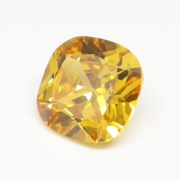
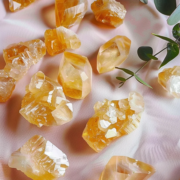
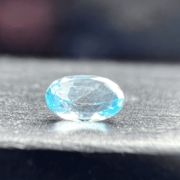


Leave a Reply
Want to join the discussion?Feel free to contribute!